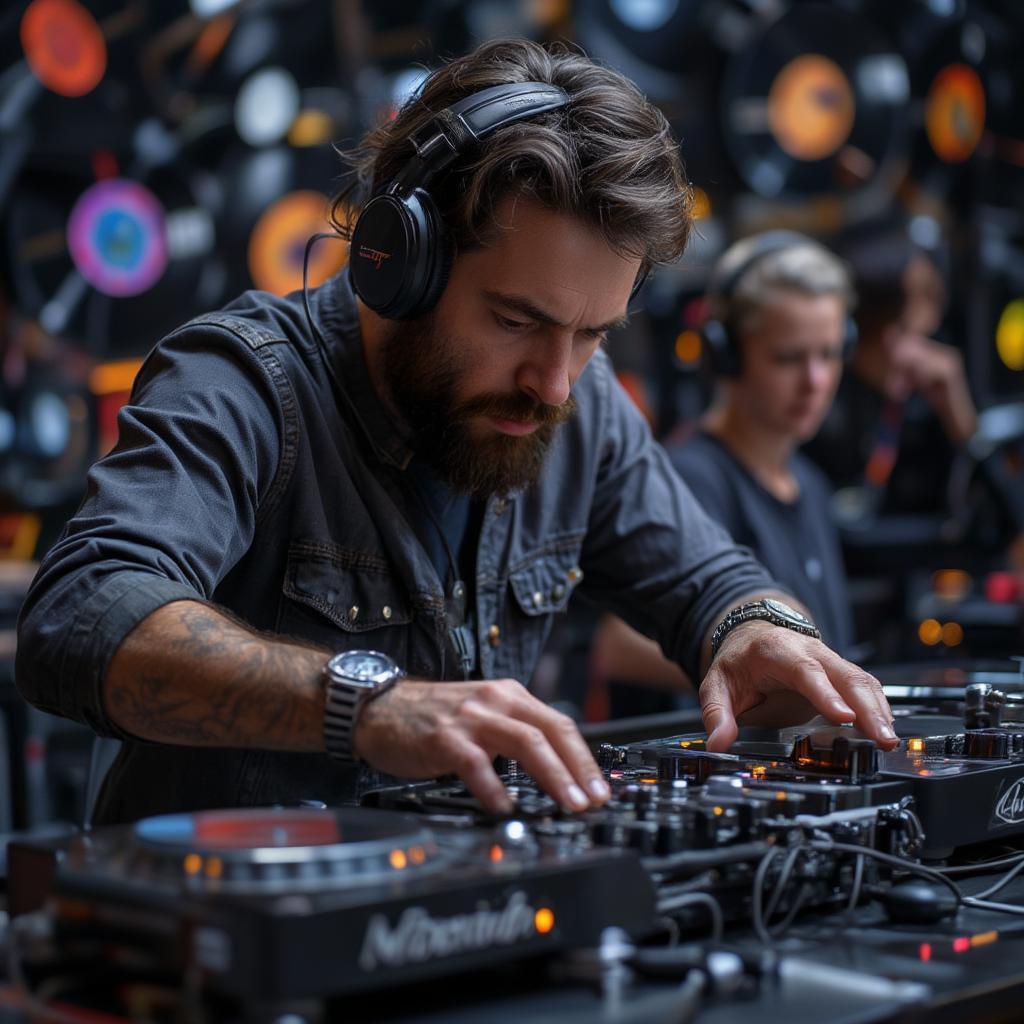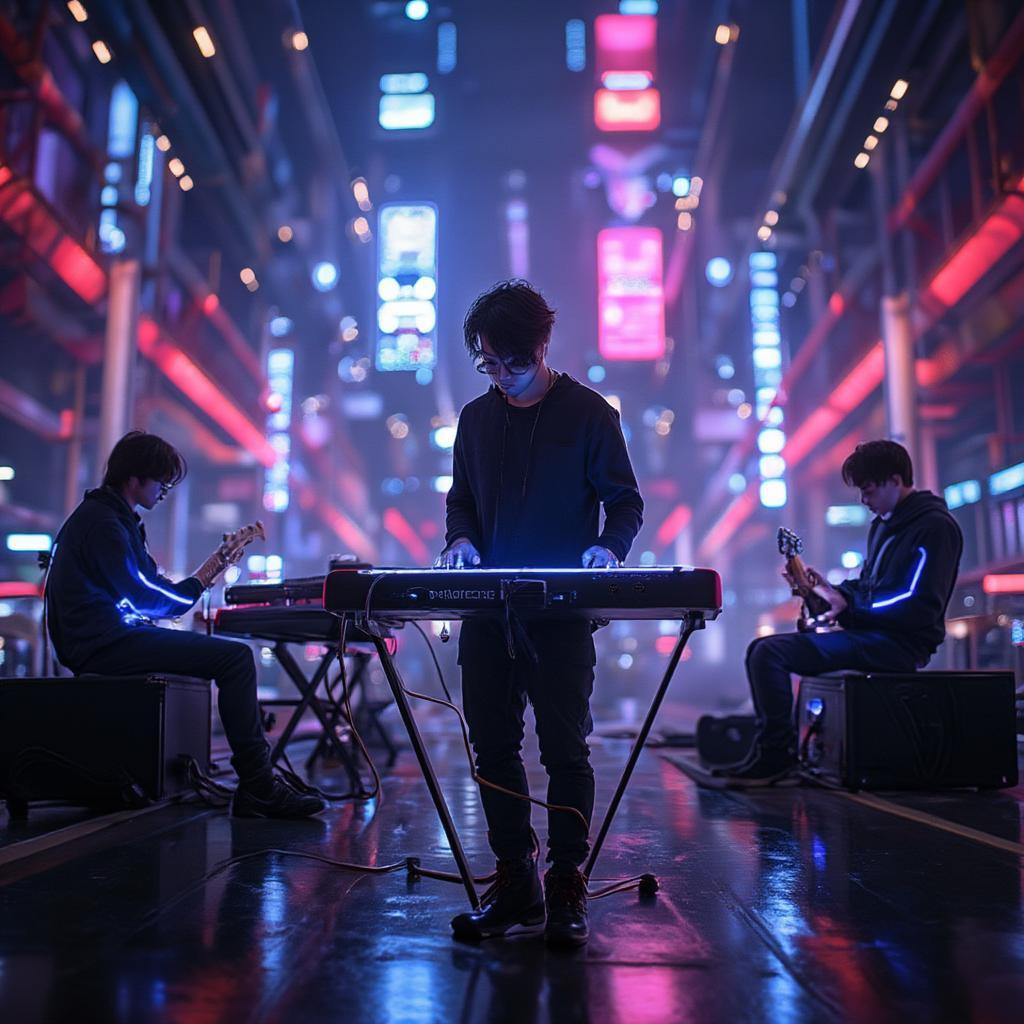Shake Your Groove Thing: A Deep Dive into Disco Funk Music

Disco Funk Music, oh yeah, it’s a cosmic concoction, a sonic stew of syncopated rhythms, shimmering synths, and soulful vocals that gets your feet moving and your spirit grooving. It’s not just music; it’s a feeling, a time machine back to the sweat-soaked dance floors of the 70s and 80s, but with a modern twist that keeps it fresh and funky. We’re talkin’ about that irresistible blend of disco’s infectious energy and funk’s raw, rhythmic power. So, buckle up, buttercup, because we’re about to take a deep dive into the universe of disco funk music, exploring its origins, its unique sound, and its enduring impact on music today.
What Exactly is Disco Funk Music?
You dig it, right? Disco funk ain’t just one sound; it’s like a musical love child, the beautiful, bouncy offspring of disco and funk. Disco, you know, with its four-on-the-floor beat, its string sections and glitter balls, brought the sophisticated party vibe. Funk, with its heavy basslines, its syncopated rhythms, and its raw soul, brought the grit and the groove. When these two got together, baby, that’s where the magic happened. It’s a sound that makes you want to dance, sing, and generally lose your mind in the groove. Think of it like this: if disco was a polished chrome Cadillac, then funk was the souped-up engine underneath. Disco funk? That’s the whole package, baby, shiny and powerful.
The Genesis of the Groove: Tracing the Roots of Disco Funk
Back in the day, the early 70s were a musical melting pot. Disco was starting to bubble up in the underground clubs, while funk, led by pioneers like James Brown and Sly & The Family Stone, was commanding the airwaves. It wasn’t long before these two forces of nature started to intertwine. Artists began experimenting, mixing disco’s sophisticated production with funk’s raw, rhythmic foundation. This cross-pollination gave birth to the sweet spot that is disco funk, giving us iconic tracks that still sound as good today as when they first dropped.
Key Characteristics of the Sound
Now, let’s get down to the nitty-gritty. What makes disco funk so darn special? It’s a combination of many elements working in perfect harmony:
- The Driving Beat: A heavy emphasis on the four-on-the-floor disco kick drum, combined with a funky, syncopated backbeat.
- The Bassline: A prominent, often melodic bassline that locks in with the drums to create that unstoppable groove.
- The Guitar: Often wah-wah drenched rhythm guitars that add both funkiness and texture.
- The Vocals: Soulful, often layered vocals, sometimes with call-and-response structures, delivered with plenty of attitude.
- The Synths: Shimmering, futuristic synths that create a spacey, almost otherworldly atmosphere.
- The Percussion: Latin-influenced percussion that adds complexity and groove.
“Disco funk isn’t just a genre; it’s a feeling. It’s the sound of freedom, of letting loose and getting down. It’s about the groove, baby! If it don’t make you move, it ain’t funk!” says Dr. Funkenstein, a legendary musicologist and funk philosopher.
The Golden Era: Disco Funk at its Peak
The late 70s and early 80s saw the rise of disco funk to its full glory. This was the era when the music dominated the dance floors, the airwaves, and the cultural zeitgeist. Artists and bands like Earth, Wind & Fire, Parliament-Funkadelic, Kool & the Gang, and Rick James were crafting unforgettable anthems that became the soundtrack to a generation. It was a time of outrageous fashion, big hair, and even bigger sounds.
Iconic Artists and Their Impact
Let’s talk about some of the cats that really shaped the disco funk sound.
- Earth, Wind & Fire: With their incredible musicianship, their spiritual lyrics, and their blend of funk, soul, and jazz, EWF became masters of making the dance floor a place of transcendence.
- Parliament-Funkadelic: These cats brought the crazy, the outrageous, and the otherworldly to funk. Their concept albums and their funk-infused rock & roll were revolutionary, baby.
- Kool & the Gang: With their impeccable grooves, their horn sections, and their party anthems, they were masters of the dance floor.
- Rick James: Known for his raw sexuality, his funky basslines, and his unforgettable vocals, Rick James was one of the biggest stars of the disco funk era.
These artists, and countless others, created a legacy that continues to inspire musicians today. Their innovations in music production, performance, and style have left an indelible mark on the history of popular music. They showed us that music could be both funky and sophisticated, both danceable and thought-provoking.
Cultural Significance and Impact
Disco funk wasn’t just music, it was a cultural force. It became associated with liberation, expression, and celebration. It gave a voice to the marginalized communities, and it brought people together on the dance floor, regardless of race, creed, or background. The music was a unifying force, a soundtrack to the good times. It was also visually arresting, with its outrageous fashion, its elaborate stage shows, and its overall sense of flamboyant excess. In many ways, disco funk paved the way for future genres, including hip-hop and house music, and its influence can still be heard in many genres today.
“The funk is a feeling, a life force. It’s about truth, honesty and letting the groove take control. It transcends cultures, generations. It’s something that is deep inside us all.” – Professor Grooveson, Funkology Professor
The Resurgence of Disco Funk: A Modern Take
Disco funk never really went away, it just took a breather, went underground for a bit. Lately, there’s been a huge resurgence, with artists bringing that classic sound into the modern age. We’re talkin’ about a new wave of musicians who are embracing the genre, updating it, and making it relevant for today’s audiences. This resurgence has seen the classic sounds sampled, reinterpreted, and given a new lease on life. From the dance clubs to the mainstream, disco funk is once again capturing hearts and moving feet.
How Modern Artists are Reviving the Genre
Modern artists are doing something special. They’re not just copying the past, they’re building upon it, adding their own unique flavors. This includes:
- Sampling: Using classic disco funk samples in new and innovative ways.
- Fusion: Blending disco funk with other genres like electronic music, R&B, and hip-hop.
- Retro Sound Design: Recreating the classic sounds of vintage synths and instruments but with modern technology.
- Live Performance: Putting a heavy emphasis on live performance, bringing the energy and spontaneity of funk to a new generation.
This new wave of artists is giving the genre a fresh appeal, ensuring its continued relevance in the ever-evolving landscape of popular music.
The Future of the Funk
The future of disco funk is bright, baby! The genre is continuously evolving, its adaptability to modern sounds and tastes ensuring that it will continue to be a force in music for years to come. We can expect to see further experimentation, blending the old and the new, pushing the boundaries and keeping things funky fresh.
“The key to great disco funk music is all about that groove. It has to be something that hits you in the soul and moves you, something timeless but yet so current.” – Funkadelic Jones, Grammy-Winning Producer
How to Immerse Yourself in the Disco Funk Universe
Ready to experience the magic of disco funk? Here are a few tips to get you started:
- Dive into the classics: Begin by exploring the iconic albums of the genre’s pioneers, from Parliament-Funkadelic to Earth, Wind & Fire and beyond.
- Explore the modern interpretations: Seek out contemporary artists who are keeping the flame alive, giving the sound a fresh spin.
- Hit the dance floor: Find a live show or club night that plays disco funk, experience the music as it was intended to be experienced – in a dance floor.
- Listen actively: Pay attention to the intricate details, to the layers of sound, the interplay between instruments.
- Share the groove: Introduce your friends to the magic of disco funk, spread the love, the funky gospel.
Disco funk is more than just music; it’s a vibe, a culture, a way of life. It’s about embracing the groove, letting go of your inhibitions, and getting lost in the rhythm. So, grab your best dancing shoes, and let the funky times roll.
Conclusion: The Groove Lives On
Disco funk music, a sonic explosion born from the collision of disco’s sparkle and funk’s raw power, continues to be a force in the music world. From its 70s origins to its modern resurgence, the genre has consistently captivated audiences with its irresistible rhythms, its soulful vocals, and its infectious energy. It’s not just about the music; it’s about a feeling, a spirit of freedom, and a celebration of life. As we look to the future, we can be certain that disco funk will continue to evolve, to innovate, and to get the world grooving, one beat at a time. So, go on, put on some funky music and let that groove move your soul.

Frequently Asked Questions
Here are some frequently asked questions about the genre that we dig:
What makes disco funk different from regular disco?
Disco funk blends the four-on-the-floor beat of disco with the syncopated rhythms, prominent basslines, and raw soul of funk, creating a more complex and groove-oriented sound, often adding layers of horns and a heavier use of synths.
Who are some of the key artists in the history of disco funk music?
Key artists include Parliament-Funkadelic, Earth, Wind & Fire, Kool & the Gang, Rick James, and Chic, all pioneers who shaped the sound of the genre and brought it to the masses.
What are the main elements that characterize disco funk?
Elements include a four-on-the-floor beat, prominent funky basslines, syncopated rhythms, wah-wah drenched guitars, soulful vocals, often with call and response, and shimmering space-like synths.
Is disco funk still relevant today, or is it just a thing of the past?
Disco funk is very much alive and kicking today, with many modern artists reviving the classic sound and mixing it with newer genres, making it appealing to a new generation of music lovers.
How did disco funk influence other music genres?
It’s a hugely influential genre, paving the way for other sounds such as house music, hip-hop and R&B, particularly in its use of basslines, rhythm, and overall party vibe.
What are some good starting points for listening to disco funk?
Start with the classics, check out albums like “That’s the Way of the World” by Earth, Wind & Fire, “Mothership Connection” by Parliament-Funkadelic, and “Street Songs” by Rick James.
Where can I find new disco funk music?
Streaming platforms, online music stores, record stores, and live music venues are great places to discover new disco funk, both from modern artists and classic bands.




